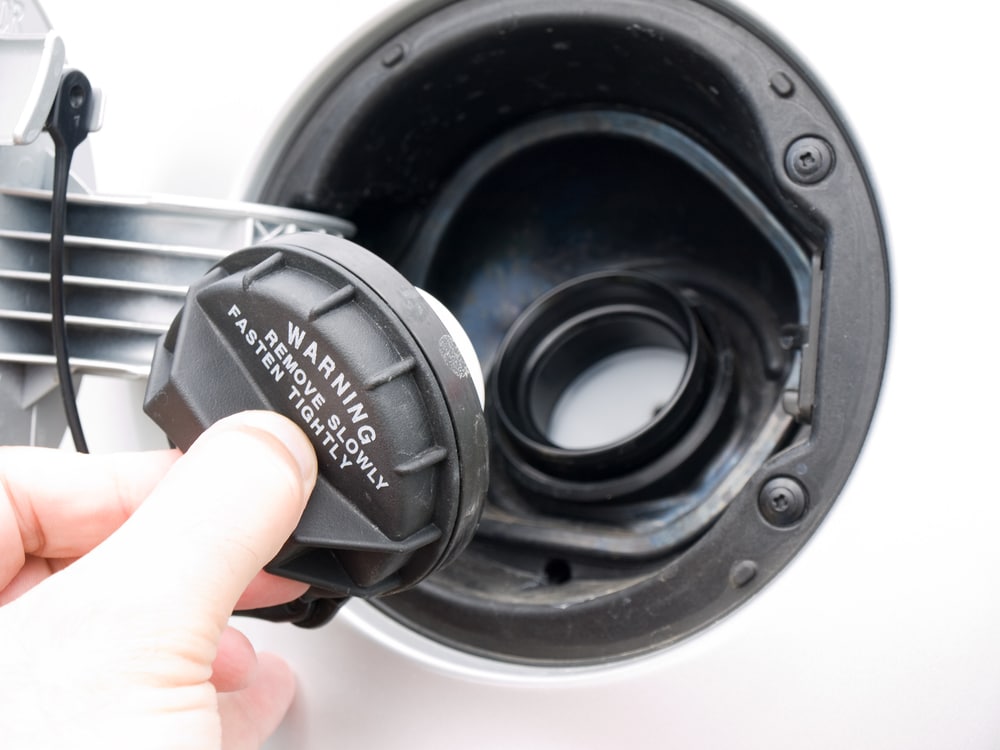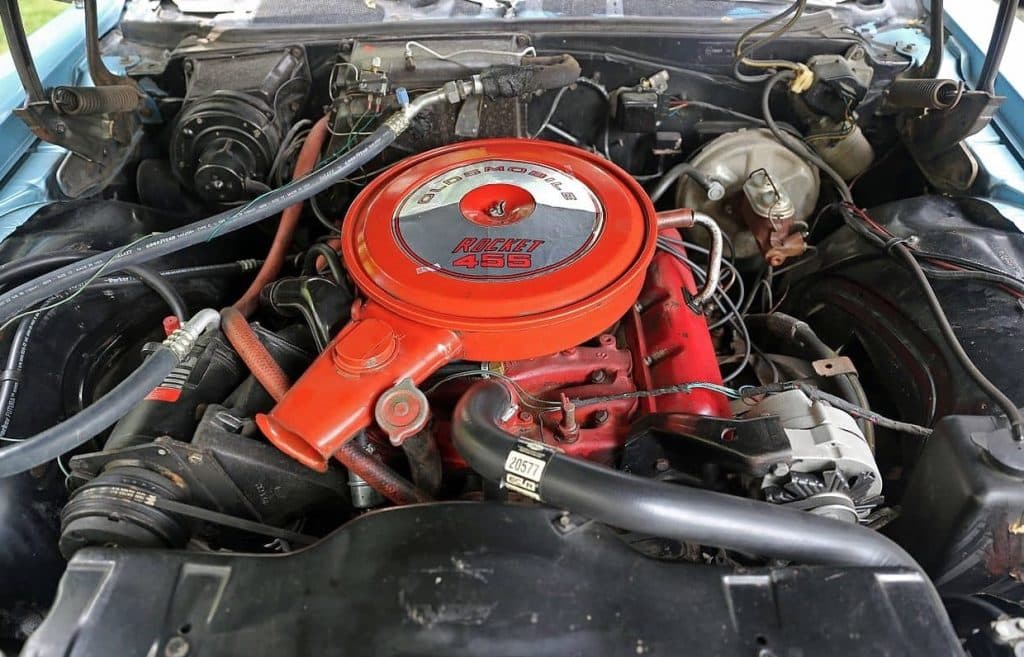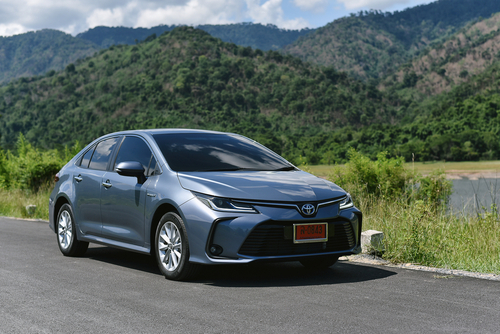Ever wondered how much gas your car can guzzle? The answer might surprise you.
Most passenger vehicles can hold between 12 to 16 gallons in their tanks. The average car gas tank size is about 14.5 gallons. But it’s not one-size-fits-all in the automotive world.

Your ride’s thirst for fuel depends on its size and purpose. A compact car might sip from a modest 12-gallon reservoir, while a beefy pickup truck could gulp down 30 gallons or more.
Luxury sedans and SUVs often fall somewhere in the middle, with tank capacities ranging from 15 to 20 gallons.
Your car’s fuel capacity isn’t just trivia – it’s practical knowledge that can save you from running on fumes. It helps you plan road trips, estimate fuel costs, and even improve your vehicle’s fuel efficiency.
So next time you’re at the pump, take a moment to appreciate that hidden tank keeping you on the move.
Key Takeaways
- The average car gas tank holds about 14.5 gallons, but sizes vary widely based on vehicle type
- Understanding your car’s fuel capacity helps with trip planning and estimating costs
- Regular maintenance of your fuel system can improve efficiency and extend your car’s range
Understanding Fuel Tank Basics
Fuel tanks are the unsung heroes of your car, quietly storing the liquid gold that keeps you cruising. Let’s pop the hood on these essential reservoirs and explore what makes them tick.
What Is a Fuel Tank?
You might think of a fuel tank as your car’s personal gas station. It’s a sturdy container, usually made of steel or plastic, that holds your vehicle’s fuel supply.
This isn’t just any old bucket, though – it’s a precision-engineered component designed to keep your gasoline or diesel safe and ready for action.
Most fuel tanks are tucked away under your car, protected from road debris and potential impacts. They’re equipped with a filler neck (where you stick the gas pump nozzle) and various sensors to let you know when it’s time to visit your friendly neighborhood gas station.
Common Fuel Tank Capacities

Now, let’s talk numbers. Your car’s thirst for fuel can vary wildly depending on its size and purpose. Here’s a quick rundown of typical fuel tank capacities:
- Compact cars: 10-14 gallons
- Sedans: 14-18 gallons
- SUVs and trucks: 18-30+ gallons
Remember, these are just ballpark figures. Your sporty coupe might sip from a dainty 12-gallon tank, while that monster pickup truck could be packing a whopping 35-gallon reservoir.
Interestingly, some manufacturers are opting for smaller tanks in newer, more fuel-efficient models. They figure if you’re getting better mileage, you don’t need to lug around as much fuel. Clever, right?
To find out exactly how many gallons your car can guzzle, check your trusty owner’s manual or give your dealership a ring. They’ll have the scoop on your specific model’s capacity.
Car Types and Gas Tank Sizes
Gas tank sizes vary widely across different vehicle types. Your car’s fuel capacity directly impacts how often you’ll be visiting the pump and how far you can cruise between fill-ups.
The Compact Car and Sedan Story

You’ll find that your trusty Honda Civic or Toyota Corolla typically holds between 12 and 14 gallons of gas. These compact cars are fuel-sippers, designed to get you from A to B without guzzling your paycheck.
Stepping up to a midsize sedan like the Honda Accord? You’re looking at a slightly larger tank, usually in the 14 to 16 gallon range. It’s like upgrading from a regular coffee to a grande – more fuel means more time between pit stops.
Remember, though, just because your tank is bigger doesn’t mean you should let it run on fumes. Your wallet might thank you for stretching that last gallon, but your car’s fuel pump? Not so much.
SUVs and Trucks: Bigger and Thirstier
If you’re piloting an SUV or truck, you’ve got a thirstier beast on your hands. These vehicles often sport tanks holding 18 to 25 gallons. It’s like comparing a kiddie pool to an Olympic-sized one!
Your average SUV might have a 20-gallon tank, while some full-size trucks can carry up to 30 gallons. That’s great for long hauls, but not so great when it’s time to pay at the pump.
Pro tip: If you’re filling up a big SUV or truck, maybe pack a snack. You’ll be standing at that pump for a while!
Supercars and Sports Cars: High-Octane Need
Now, if you’re lucky enough to be cruising in a supercar, you might be surprised. Despite their power, many supercars have relatively small tanks, often around 20 gallons or less.
Why? Well, every pound counts when you’re trying to hit ludicrous speed. Plus, these speed demons are usually more about short, thrilling drives than cross-country road trips.
But don’t worry, with the fuel economy these beasts get, you’ll be on first-name terms with your local gas station attendant in no time!
Brand Specific Tank Capacities
Let’s take a cruise through the gas tank capacities of various car brands. You’ll be surprised at how much these metal beasts can guzzle down!
Economy Brands: Honda, Toyota, Ford, etc.
Ever wondered why your wallet feels lighter after filling up your Honda Civic? Well, its 12.4-gallon tank might have something to do with it. Toyota Corollas aren’t far behind, typically sporting a 13.2-gallon tank.
Ford’s Focus, on the other hand, gives you a bit more room to roam with its 14.5-gallon capacity. Feeling thrifty? The Hyundai Elantra’s 12.4-gallon tank might be your new best friend.
Here’s a quick comparison:
- Honda Civic: 12.4 gallons
- Toyota Corolla: 13.2 gallons
- Ford Focus: 14.5 gallons
- Hyundai Elantra: 12.4 gallons
Remember, these compact cars are designed for efficiency, not long-haul trucking!
Luxury and Performance: BMW, Mercedes-Benz, Audi
Ready to splurge on premium gas? Luxury brands don’t skimp on tank size. Your BMW 3 Series can gulp down about 15.6 gallons, while the Mercedes-Benz C-Class holds a respectable 17.4 gallons.
Audi’s A4? It’s right in the middle with a 15.3-gallon capacity. These German engineering marvels give you more miles between fill-ups, perfect for those autobahn-inspired highway cruises.
Let’s break it down:
- BMW 3 Series: 15.6 gallons
- Mercedes-Benz C-Class: 17.4 gallons
- Audi A4: 15.3 gallons
Just remember, with great tank size comes great responsibility… to your wallet!
American Muscle: Ford Mustang, Chevrolet Camaro
Buckle up, speed demons! These all-American icons pack some serious fuel capacity. Your Ford Mustang can hold anywhere from 15.5 to 16 gallons, depending on the model. Not to be outdone, the Chevrolet Camaro boasts a 19-gallon tank.
Dodge Challenger? It’s the heavyweight champ with a whopping 18.5-gallon tank. Perfect for those quarter-mile sprints and impromptu road trips.
Here’s how they stack up:
- Ford Mustang: 15.5-16 gallons
- Chevrolet Camaro: 19 gallons
- Dodge Challenger: 18.5 gallons
Remember, these beasts were built for power, not fuel economy. You might want to keep your local gas station on speed dial!
Fuel Economy and Efficiency
Fuel economy and efficiency are crucial factors to consider when purchasing a vehicle. They determine how far you can go on a tank of gas and how much you’ll spend at the pump.
Gas Mileage: What Can You Expect?
Ever wonder why your buddy’s compact car seems to sip fuel while your SUV guzzles it? It’s all about the miles per gallon (mpg).
Most modern cars average between 25-30 mpg on the highway. City driving? You’re looking at 20-25 mpg.
But don’t fret if your ride isn’t hitting those numbers. Your driving style plays a big role.
Lead foot? You’re burning cash faster than rubber. Smooth operator? You’re stretching that tank further than a dollar at the casino.
Here’s a quick breakdown:
- Small cars: 30-40 mpg
- Midsize sedans: 25-35 mpg
- SUVs: 20-30 mpg
- Trucks: 15-25 mpg
Remember, these are ballpark figures. Your mileage may vary, as they say in the biz.
The Impact of Engine Size
Now, let’s talk about what’s under the hood. Engine size is like shoe size – bigger isn’t always better.
A larger engine typically means more power, but it also means a thirstier vehicle.
Think of it this way: A 4-cylinder engine is like a lightweight boxer – quick, agile, and doesn’t need much fuel. A V8? That’s your heavyweight champ – powerful, but boy does it need its protein shakes (or in this case, gasoline).
Here’s a rough guide:
- 4-cylinder: Great for fuel economy, perfect for commuters
- 6-cylinder: A nice balance of power and efficiency
- 8-cylinder: Power-hungry, but you’ll feel it at the pump
Remember, technology is always improving. Modern V6 engines can often outperform older V8s while sipping less fuel.
The Rise of Fuel-Efficient Vehicles
You’ve probably noticed more hybrids and electric vehicles on the road lately. It’s not just a fad – these fuel-efficient vehicles are here to stay.
Hybrids combine a gasoline engine with an electric motor, giving you the best of both worlds. They’re perfect for city driving, where they can switch to electric power in stop-and-go traffic.
Electric vehicles take it a step further. No gas required! Just plug it in and go. They’re like the strong, silent type of the car world.
But don’t think traditional cars are being left in the dust. Manufacturers are constantly improving fuel efficiency with technologies like:
- Turbocharging
- Direct injection
- Cylinder deactivation
These advancements mean you can have your cake and eat it too – power when you need it, efficiency when you don’t.
Maintaining Your Gas Tank
Keeping your gas tank in tip-top shape isn’t just about filling it up. It’s about treating it right and knowing when to give it some love. Let’s dive into the nitty-gritty of gas tank care.
Regular Maintenance for Optimal Performance
You might think your gas tank is a set-it-and-forget-it deal, but a little TLC goes a long way.
First things first, keep it clean! Debris in your tank can clog up your fuel system faster than you can say “check engine light.”
Every now and then, toss a bottle of fuel system cleaner into your tank. It’s like a spa day for your car’s innards.
And don’t forget to check those fuel lines and connections. A small leak can turn into a big headache real quick.
For you small car owners, your tanks might be tiny, but they need love too. In fact, they’re more prone to condensation build-up.
So, keep ’em at least half full to avoid moisture issues.
When to Fill Up: Understanding the Low Fuel Warning
That little orange light isn’t just there to make your dashboard look pretty. It’s your car’s way of saying, “Hey buddy, I’m getting thirsty!”
Most cars give you about 30-50 miles of wiggle room once that light comes on. But don’t push your luck! Running on fumes isn’t just risky; it’s downright bad for your fuel pump.
Here’s a pro tip: Fill up when you hit a quarter tank. It’s safer, and you’ll avoid the stress of searching for a gas station when you’re running on empty.
Remember, your fuel gauge isn’t always spot-on. It’s like that friend who’s always “five minutes away” – not entirely reliable.
So, play it safe and fill up sooner rather than later.
Frequently Asked Questions
Curious about car fuel capacities? Let’s fill up your knowledge tank with some gas-tastic facts. From compact cars to brawny trucks, we’ll explore just how much go-juice these vehicles can hold.
What’s the average fuel capacity in gallons for a mid-size sedan, you ask?
Well, buckle up, because most mid-size sedans can hold between 14 to 18 gallons of liquid gold. That’s enough to get you through a few rounds of carpool duty or a decent road trip.
Ever wonder just how many gallons of fuel those beefy trucks can lug around?
Hold onto your hats, folks! Those big ol’ trucks aren’t just for show. They can guzzle down 20 to 30 gallons or more. That’s enough to make your wallet cry at the pump, but hey, at least you won’t be making pit stops every hour on that cross-country haul.
Curious about how far you could get on a full tank in an average car? Mileage may vary, folks!
You might be surprised how far you can stretch those gallons. With an average-sized tank of 15-20 gallons, you could potentially cruise for 300-400 miles before your fuel light starts giving you the stink eye.
For those environmentally conscious drivers, just how much petrol can your 4-cylinder eco-friendly ride hold?
Good news, green machine! Your eco-warrior typically sips from a smaller reservoir. Most 4-cylinder compact cars come with fuel tanks ranging from 10 to 14 gallons. Less fuel, less fuss, and more trees to hug!
Oh, you’re into power, are you? Ever pondered the fuel tank size of those mighty 6-cylinder engines?
Six-cylinder beasts usually come with a bigger appetite. You’re looking at fuel tanks that can hold anywhere from 16 to 21 gallons. More power means more fuel, but hey, that’s the price of performance, right?
Sporting a Honda Civic and trying to plan your budget? Guessing its thirst for fuel in gallons could be handy!
If you’re cruising in a Honda Civic, you’ve got a pretty modest drinker on your hands.
Most recent models come with a fuel tank capacity of about 12.4 gallons.
That’s enough to keep you zipping around town without breaking the bank.
